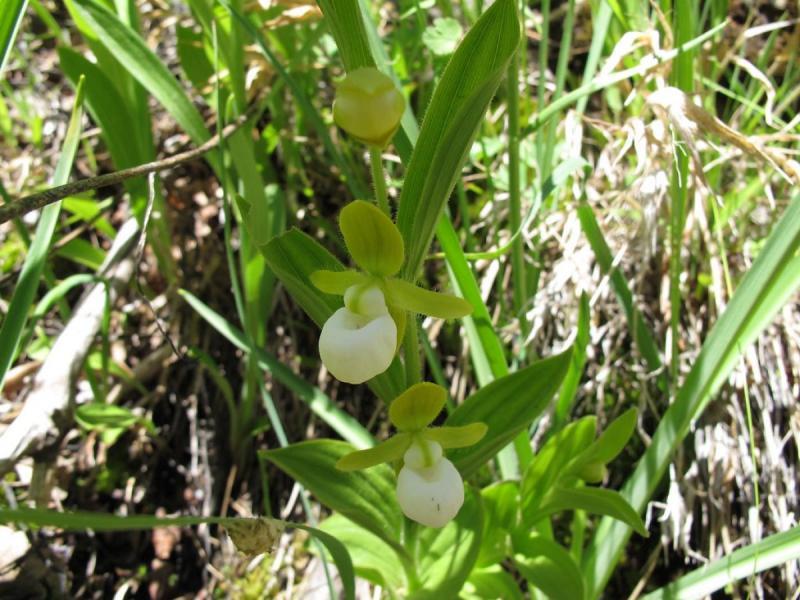Cypripedium californicum
Also known as: California Lady's Slipper in the subfamily: Cypripedioideae
General Information
California Lady's Slipper is a giant sympodial cold to warm growing terrestrial orchid belonging to the sub family Cypripedioideae.
Plant Description
Sympodial. Grows to 20-120cm. Each new growth has numerous erect elliptic, lance shaped leaves that grow to 2-15cm long. Pseudobulbs grow to 120cm
Flowers
Numerous fragrant blossoms appear
Fragrance
The orchid is fragrant.
Substrate(s)
- Perlite
- Sand
Care Notes
These orchids live on the forest floor, often in dead leaves or humus, yet still have the organs that would allow them to store water given unpredictable or intermittent weather conditions. They require some moisture to always be present in the soil, but not much. Water when the soil approaches dryness and don't let it dry out completely. Some growers place pots in saucers to retain water, but this may create an environment that is too wet, leading to rot.
In most areas these can be grown in the garden under trees or in sheltered locations, as long as they are reasonably protected from huge weather swings, excessive heat, and frost.
Fragrant:- IsFragrant
Climate
These orchids grow in cool climates, at low altitudes, in cool plains, forests or coastal scrub.
They are forgiving of humidity variances as long as temperatures are kept on the cool side. They can do well outdoors in the garden in cool and temperate areas, though it is important that they are protected from warm dry winds. They can enjoy morning sun especially in winter but will need protection from the hot sun in the afternoon and during summer. With some acclimatisation they may be able to receive more sun.
Grows at low to high elevations. Rainfall ranges from 13mm to 338mm per day, heaviest in January and lightest in August. Humidity ranges from 81% to 88%, highest in August and lowest in March. Temperature ranges from -2C to 13C, highest in September (4C to 13C) and lowest in January (-2C to 6C).
Fertiliser
Apply liquid based fertiliser per recommended directions. They can benefit from a high phosphate fertiliser leading up to flowering season, followed by a high nitrogen fertiliser when new growth appears, and a balanced fertiliser in other times. These orchids can also tolerate slow release fertiliser applied 1-2 pellets per cup (250ml) of media.
Apply fertiliser regularly at half strength year round. Use a high Nitrogen fertiliser during Spring and Summer. Use a high Phosphorous fertiliser during Summer.Potting
These plants can be sensitive to repotting though should not require repotting regularly. Repotting should be done when the mix has broken down to the point that it doesn't absorb water or holds onto water for far too long, usually the plant shows a decline in growth as well.
The mix should be free draining, with a blend of 30% inorganic ingredients such as coarse sand, gravel or perlite, mixed in with about 70% organic ingredients such as peat, leaf litter or decomposed bark. Avoid commercial potting mixes as they can vary wildly and may contain "wetting agents" that can hold onto water for loo long, causing rotting and stunted growth.
This plant does well mounted.





















